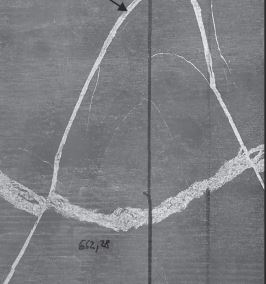Microstructure and cementation analyses on core samples from BAF–2 well (Boda Claystone Formation, Mecsek Mts.)
Abstract
The Boda Claystone Formation, a potential host rock of the high-level nuclear waste repository, is located in the Mecsek Mts. (SW Hungary). Since the formation is characterized by low porosity and permeability the fluid flow occurs through fractures and structural inhomogenities. The aim of this study is to determine the microstructure of the structural elements caused by major deformation events. Morphological, textural and mineralogical analyses were carried out on core samples from borehole BAF–2. A total of fifty-six samples were collected from 74.34–899.22 m depth intereval, which covers almost the true vertical depth of the borehole. The mineralogical composition of vein-filling minerals was analyzed by polarizing microscopy, X-ray fluorescence spectroscopy and Raman microspectroscopy. The dip angles of the veins were determined using stitched core scanner images. These dip values were corrected by the measured tilt of the well. According to our observations, veins from borehole BAF–2 can be divided into six groups based on their mineralogical composition, growth morphology and average dip angle. The dominant vein-filling minerals are calcite and anhydrite with small amount of albite, celestine, quartz, baryte and pyrite. The growth morphology can be syntaxial, antitaxial and ataxial as well. The dip values define three groups with 22°, 42° and 70° average values. Based on dip angle distribution and microstructure analyses deformation history and paleofluid flow events might have been more complex than expected before.
















